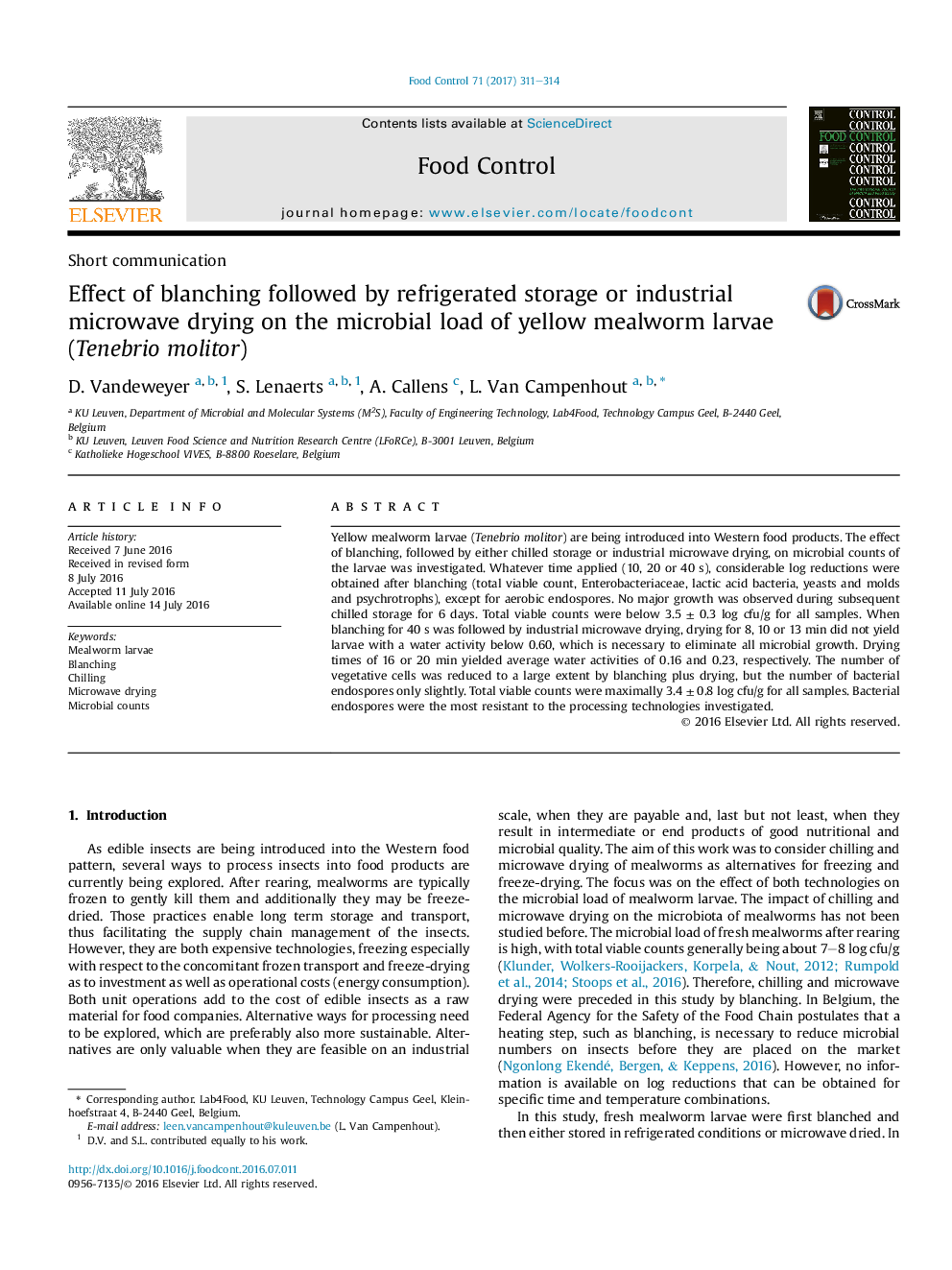| Article ID | Journal | Published Year | Pages | File Type |
|---|---|---|---|---|
| 6389968 | Food Control | 2017 | 4 Pages |
Abstract
Yellow mealworm larvae (Tenebrio molitor) are being introduced into Western food products. The effect of blanching, followed by either chilled storage or industrial microwave drying, on microbial counts of the larvae was investigated. Whatever time applied (10, 20 or 40 s), considerable log reductions were obtained after blanching (total viable count, Enterobacteriaceae, lactic acid bacteria, yeasts and molds and psychrotrophs), except for aerobic endospores. No major growth was observed during subsequent chilled storage for 6 days. Total viable counts were below 3.5 ± 0.3 log cfu/g for all samples. When blanching for 40 s was followed by industrial microwave drying, drying for 8, 10 or 13 min did not yield larvae with a water activity below 0.60, which is necessary to eliminate all microbial growth. Drying times of 16 or 20 min yielded average water activities of 0.16 and 0.23, respectively. The number of vegetative cells was reduced to a large extent by blanching plus drying, but the number of bacterial endospores only slightly. Total viable counts were maximally 3.4 ± 0.8 log cfu/g for all samples. Bacterial endospores were the most resistant to the processing technologies investigated.
Related Topics
Life Sciences
Agricultural and Biological Sciences
Food Science
Authors
D. Vandeweyer, S. Lenaerts, A. Callens, L. Van Campenhout,
